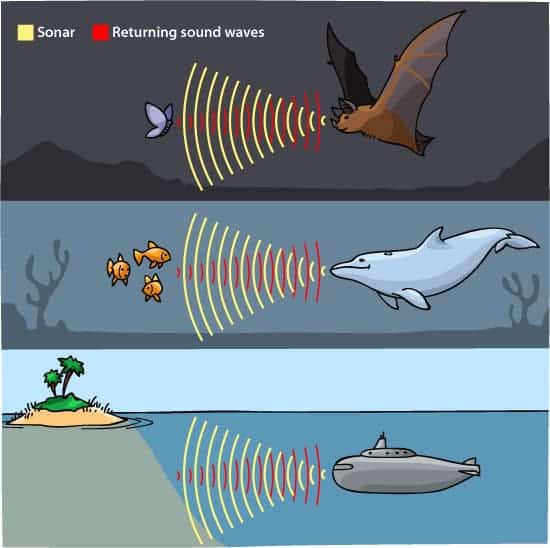It’s amazing how two different animals from two completely different environments evolve some identical physical features. Take bats and dolphins for instance. Both of them use a complex system that produces, receives and process ultrasonic sound waves in order to identify visually hidden objects, track down prey or navigate through obstacles better – typically this is referred to as echolocation, a natural sonar. The evolution of similar traits in different species, is known as convergent evolution, and according to new research led by scientists at Queen Mary University of London and published in Nature this week, evolution at a genetic level is also shared during this process.
To see the extent to which convergent evolution involves the same genes, the researchers proceeded to undertake the most complex and thorough genome-wide surveys of its type. As such, the genomes of some 22 mammals were analyzed, each sequence being compared the other. This included bats and bottlenose dolphins – two species that both use the same form of echolocation, but which have evolved it independently.
This was no easy task, however. To perform the analysis, the team had to sift through millions of letters of genetic code using a computer program developed to calculate the probability of convergent changes occurring by chance, so they could reliably identify ‘odd-man-out’ genes. They used a supercomputer at Queen Mary’s School of Physics and Astronomy (GridPP High Throughput Cluster) to carry out the survey.
Did you know that the scientists that developed the sonar and radar navigation systems used by the military got their idea from studying bat echolocation? Just like bat echolocation, sonar uses sound waves to navigate and determine the location of objects like submarines and ships. Only sonar is used underwater, while bats echolocate in the open air. Radar uses electromagnetic waves to determine the location of objects like planes and ships. Like bat echolocation, radar is also used on open air.
To their surprise, the researchers didn’t find one, two or even dozens of identical genetic changes, but over 200! Consistent with an involvement in echolocation, signs of convergence among bats and the bottlenose dolphin were seen in many genes previously implicated in hearing or deafness.
“We know natural selection is a potent driver of gene sequence evolution, but identifying so many examples where it produces nearly identical results in the genetic sequences of totally unrelated animals is astonishing,” said Dr Joe Parker, from Queen Mary’s School of Biological and Chemical Sciences and first author on the paper.
Dr. Georgia Tsagkogeorga, who undertook the assembly of the new genome data for this study, added: “We found that molecular signals of convergence were widespread, and were seen in many genes across the genome. It greatly adds to our understanding of genome evolution.”
Group leader, Dr Stephen Rossiter, said: “These results could be the tip of the iceberg. As the genomes of more species are sequenced and studied, we may well see other striking cases of convergent adaptations being driven by identical genetic changes.”
Joe Parker, Georgia Tsagkogeorga, James A. Cotton, Yuan Liu, Paolo Provero, Elia Stupka, Stephen J. Rossiter.Genome-wide signatures of convergent evolution in echolocating mammals. Nature, 2013; DOI:10.1038/nature12511










